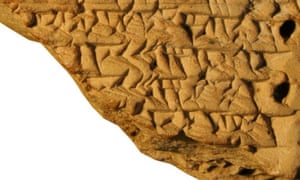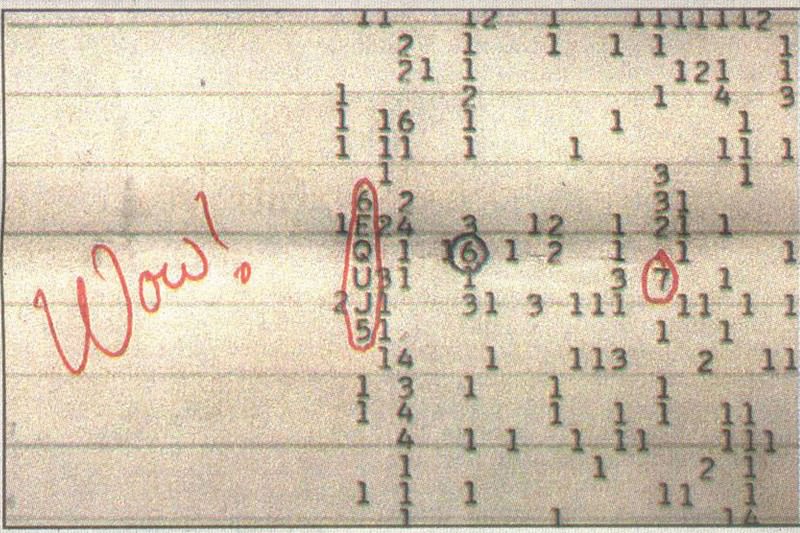My late colleague Franklyn Davin-Wilson would be jumping up and down, pointing at me and shouting "Nyah! Nyah! In your face!" -or something similar.
But this IS exciting news.
New evidence suggests a ninth planet lurking at the edge of the solar system
This artistic rendering shows the distant view from Planet Nine back towards the sun. The planet is thought to be gaseous, similar to Uranus and Neptune. Hypothetical lightning lights up the night side.
Credit: Caltech/R. Hurt (IPAC)
By Joel Achenbach and Rachel Feltman
Astronomers at the California Institute of Technology announced Wednesday that they have found new evidence of a giant icy planet lurking in the darkness of our solar system far beyond the orbit of Pluto. They are calling it "Planet Nine."
Their paper, published in the Astronomical Journal, describes the planet as about five to 10 times as massive as the Earth. But the authors, astronomers Michael Brown and Konstantin Batygin, have not observed the planet directly.
Instead, they have inferred its existence from the motion of recently discovered dwarf planets and other small objects in the outer solar system. Those smaller bodies have orbits that appear to be influenced by the gravity of a hidden planet – a "massive perturber." The astronomers suggest it might have been flung into deep space long ago by the gravitational force of Jupiter or Saturn.
Telescopes on at least two continents are searching for the object, which on average is 20 times farther away than the eighth planet, Neptune. If "Planet Nine" exists, it's big. Its estimated mass would make it about two to four times the diameter of the Earth, distinguishing it as the fifth-largest planet after Jupiter, Saturn, Uranus and Neptune. But at such extreme distances, it would reflect so little sunlight that it could evade even the most powerful telescopes.
Confirmation of its existence would reconfigure the models of the solar system. Pluto, discovered in 1930, spent three-quarters of a century as the iconic ninth planet. Then, a decade ago, Pluto received a controversial demotion, in large part because of Brown.
His observations of the outer solar system identified many small worlds there – some close to the size of Pluto –and prompted the International Astronomical Union to reconsider the definition of a planet. The IAU voted to change Pluto's classification to "dwarf planet," a decision mocked repeatedly last summer when NASA's New Horizons probe flew past Pluto and revealed a world with an atmosphere, weather and a volatile and dynamically reworked surface.
Brown, who tweets under the handle @plutokiller and who wrote the book "How I Killed Pluto and Why It Had It Coming," said now may be the time to rewrite the textbooks yet again.
"My daughter, she's still kind of mad about Pluto being demoted, even though she was barely born at that time," Brown said. "She suggested a few years ago that she'd forgive me if I found a new planet. So I guess I've been working on this for her."
NASA's director of planetary science, Jim Green, cautioned Wednesday that there could be other explanations for the observed motion of the small bodies in the outer solar system. He referenced the famous dictum from Carl Sagan that "extraordinary claims require extraordinary evidence."
“The Sagan Rule applies. If it's there, find it. I challenge you. Somebody out there oughta find it," Green said.
But he said he was personally excited about the new research: "What an era we're in, where we’re discovering new things about our solar system that we never thought possible even a handful of years ago."
Brown and Batygin initially set out to prove that Planet Nine didn't exist. Their paper builds on earlier research by two other astronomers that revealed a peculiar clustering of the small, icy objects discovered in the past decade or so in the remote regions of the solar system.
In 2014, Scott Sheppard of the Washington-based Carnegie Institution of Science and Chad Trujillo of the Gemini Observatory in Hawaii published a paper in the journal Nature that discussed the potential existence of a giant planet affecting the orbits of those dwarf worlds. Sheppard and Trujillo noted a similarity in the motion of those bodies when they are closest to the sun.
"We thought their idea was crazy," Brown said, explaining that extra planets are always the "go-to suggestion" when astronomers find orbital behavior they can't explain. But he and Batygin struggled to debunk that hypothetical ninth planet. They used mathematical equations and then computer models, ultimately concluding that the best explanation for the smaller objects' clustering was the gravitational effects of something far bigger.
Such clustering is similar to what's seen in some asteroids that are about as close to the sun as the Earth. They wind up in stable orbits that keep them far from Earth and free from any significant disturbance by the Earth's gravity.
"Until then, we didn't really believe our results ourselves. It just didn't make sense to us," Brown said. But their modeling showed that a planet with 10 times the mass of Earth would exert an influence over the orbits of the smaller bodies and keep them from coming as close to the sun as they should. It would also slowly twist these orbits by 90 degrees, making them periodically perpendicular to the plane of the solar system.
"In the back of my head, I had this nagging memory that someone had found some of these modulating objects and not known what to make of them," Brown said. "And sure enough, these objects do exist. And they were exactly where our theory predicts they should be."
That's when the Caltech researchers started to take Planet Nine seriously. "That was the real jaw-dropping moment, when it went from a cute little idea to something that might be for real," he said.
Sheppard, who co-wrote the paper that Brown and Batygin set out to disprove, says the existence of a hidden planet is still a big unknown. "Until we actually see it for real, it will always be questionable as to whether it exists," he said, cautioning that the latest calculations are based on a relatively small number of known objects and that further observations and detections of perturbed bodies would bolster the hypothesis.
Still, Sheppard significantly upped the odds of discovery – from 40 percent before to 60 percent now. “Some people took it seriously, but a lot of people didn’t," he said of his own study's findings. "With this new work, it’s much more rigorous, and people will take it more seriously now.”
Brown said he puts the odds of Planet Nine being real as "maybe 90 percent."
From the Côte d'Azur Observatory in Nice, France, planetary scientist Alessandro Morbidelli agreed that the evidence was stronger this time. "I immediately felt that this paper, for the first time, was providing convincing evidence for a new planet in the solar system," said Morbidelli, an expert in these kinds of orbital movements who was not involved in either study. "I don't see any alternative explanation to that offered by Batygin and Brown."
"We will find it one day," he added. "The question is when."
The past two decades have seen a burst of discoveries as astronomers have scrutinized the light of distant stars and looked for signs of orbiting planets. More than a thousand such planets have been detected through analysis of starlight that has traveled across the vast interstellar distances. Brown and Batygin, however, have been searching closer to home, looking for objects that orbit the sun and remain unseen only because the outer regions of the solar system are exceedingly dark.
The thought of a hidden planet larger than Earth is intriguing, but for now it's difficult to say too much about the hypothetical conditions there. Brown believes it's probably an icy, rocky world with a small envelope of gas – a planet that could have been the core of a gas giant had it not been ejected into a wonky, highly elliptical orbit. It might not make its closest approach of the sun more than once every 10,000 years, and even then it would remain far beyond the known planets.
The situation mimics what happened in the 19th century when careful observation of the seventh planet, Uranus, indicated that there must be another body in far-distant space influencing its orbit. That work led eventually to the discovery of Neptune.
It would be difficult to see the ninth planet if it's not at or near its closest approach to the sun. Brown doesn't believe the object is at that point, saying it would have been spotted by now. But he does think that the most powerful telescopes on the planet, if pointed in precisely the right direction, might be able to detect it even when it is most distant from the sun.
"We've been looking for it for a while now, but the sky is pretty big," Brown said. "We know its path, but not where it is on that path."
He and Batygin hope their paper's publication will infuse the search with new energy. "If other people – better astronomers – get excited about the idea of finding Planet Nine, we could hopefully see it within a couple of years," he said.
The two know they may not get credit for that discovery. Until the planet is spotted directly with a telescope, any work surrounding it is theoretical. Brown, Batygin and other scientists who have made the case for Planet Nine's existence are providing treasure maps and clues – but someone else could very well strike gold before they do.
If and when it's spotted, Planet Nine would be evaluated by the same criteria that got Pluto demoted. Brown isn't concerned about that.
"That's not even a question -- it's definitely a planet," he said. One of the trickiest criteria for planet status, based on the standards set by the International Astronomical Union, is that a planet must "clear the neighborhood" around its orbital zone. It needs to have the gravitational prowess to change the orbits of other objects.
"Planet Nine is forcing any objects that cross its orbit to push into these misaligned positions. It fits that concept perfectly," Brown said.
The "Pluto killer" added: "Not to mention the fact that it's 5,000 times the mass of Pluto."























